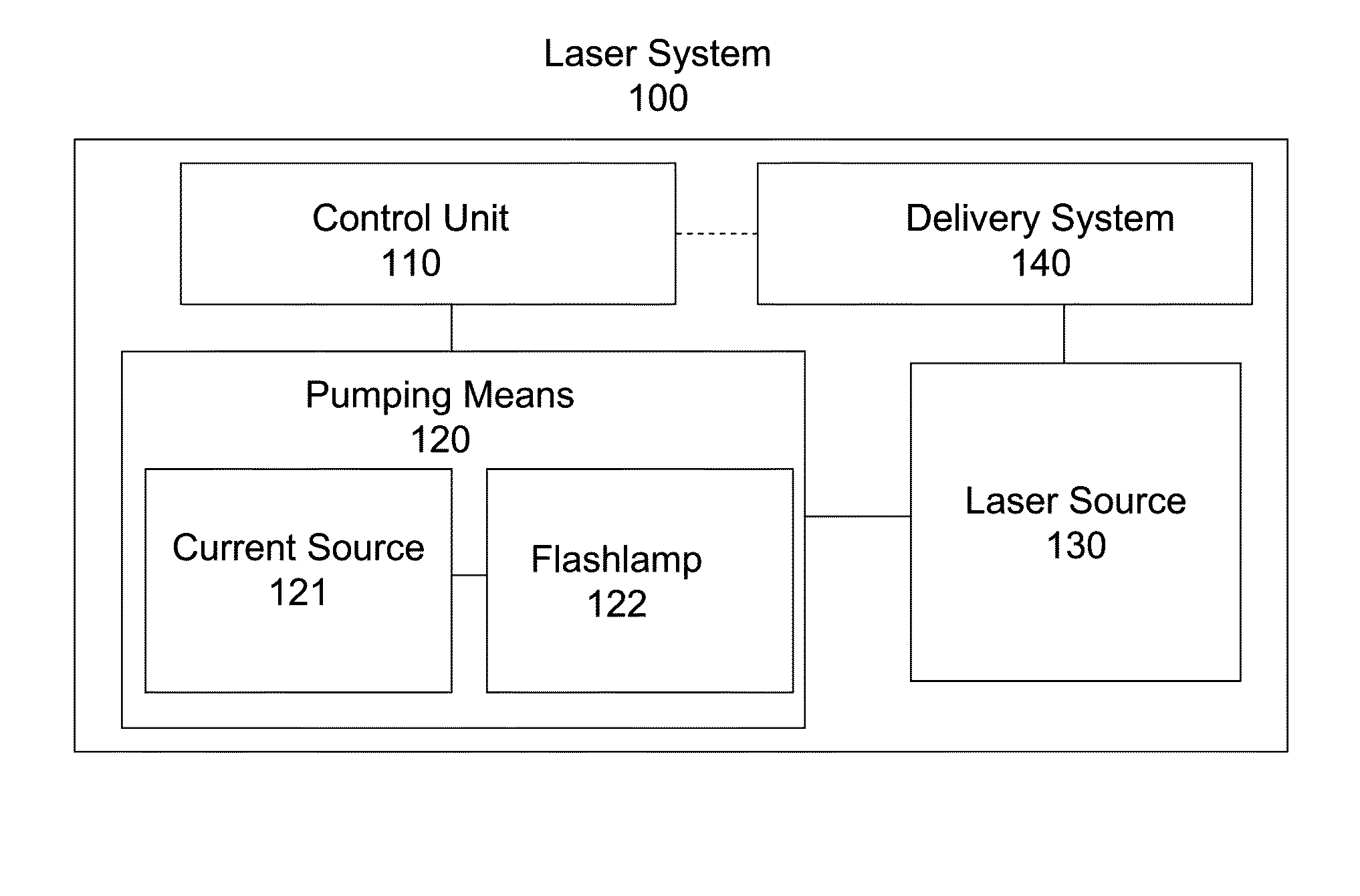Laser system for tissue ablation
a laser system and tissue ablation technology, applied in the field of medicine and dentistry, can solve the problems of unpleasant and potentially unsafe effects of laser light emission, affecting the safety of patients, and emitted high intensity visible and ultraviolet light, and achieve the effect of avoiding overheating of laser material
- Summary
- Abstract
- Description
- Claims
- Application Information
AI Technical Summary
Benefits of technology
Problems solved by technology
Method used
Image
Examples
Embodiment Construction
[0039]Some of the embodiments of the invention will be explained in the following with the aid of the drawings in more detail. It is shown in:
[0040]FIG. 1 a diagrammatic illustration of the temporal laser intensity and the temporal debris cloud development during the course of a laser pulse;
[0041]FIG. 2 a laser system according to the invention;
[0042]FIG. 3 a schematic illustration which shows the difference between the temporal development of the laser intensity according to the prior art and the temporal development of the laser intensity according to the present invention;
[0043]FIG. 4 an exemplary flash lamp current according to the present invention and the intensity of the laser pulse which is generated by the flash lamp current;
[0044]FIG. 5 in a diagrammatic illustration the temporal development of the pump-forced pulse intensity modulation according to the present invention;
[0045]FIG. 6 in a diagrammatic illustration the temporal development of a pump-forced pulse intensity m...
PUM
| Property | Measurement | Unit |
|---|---|---|
| rise time | aaaaa | aaaaa |
| decay time | aaaaa | aaaaa |
| decay time | aaaaa | aaaaa |
Abstract
Description
Claims
Application Information
 Login to View More
Login to View More - R&D
- Intellectual Property
- Life Sciences
- Materials
- Tech Scout
- Unparalleled Data Quality
- Higher Quality Content
- 60% Fewer Hallucinations
Browse by: Latest US Patents, China's latest patents, Technical Efficacy Thesaurus, Application Domain, Technology Topic, Popular Technical Reports.
© 2025 PatSnap. All rights reserved.Legal|Privacy policy|Modern Slavery Act Transparency Statement|Sitemap|About US| Contact US: help@patsnap.com



